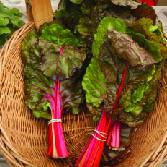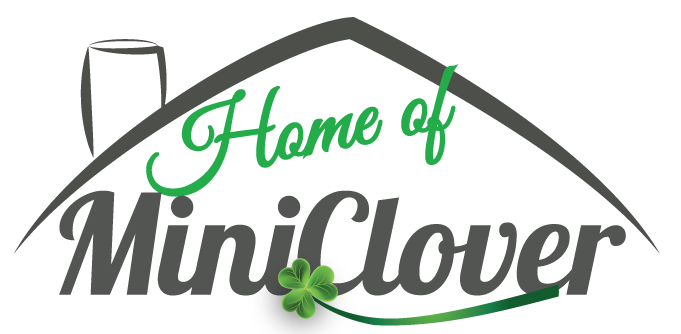



Phormium Seeds - New Hybrids
SEASON
Perennial
USDA ZONES
7 - 10
HEIGHT
60 inches
FOLIAGE COLOR
Mix
SOIL REQUIREMENT
pH 5.6 - 6.5
ENVIRONMENT
Full sun
DEER RESISTANT
Yes
MOISTURE REQUIREMENTS
Grows in dry, moist, or even wet soils
SEASON
Perennial
USDA ZONES
7 - 10
HEIGHT
60 inches
FOLIAGE COLOR
Purple
FLOWER COLOR
Orange
SOIL REQUIREMENT
pH 5.6 - 6.5
ENVIRONMENT
Full sun
DEER RESISTANT
Yes
MOISTURE REQUIREMENTS
Grows in dry, moist, or even wet soils
About...
Phormium Tenax (New Zealand Flax New Hybrids) - Phormium, a native New Zealander, is pretty new on the scene here in the U.S. It has long been grown for its strong, upright and fast growth habit and is sometimes called an ornamental grass on steroids which makes a great accent plant.
MORE PHORMIUM OPTIONS
Planting Directions
TEMPERATURE
65 - 70F
AVERAGE GERM TIME
Germination is uneven over 1 - 6 months
LIGHT REQUIRED
Yes
DEPTH
1/8th inch
SOWING RATE
2 seeds per plant
MOISTURE
Keep seeds moist until germination
PLANT SPACING
48 inches
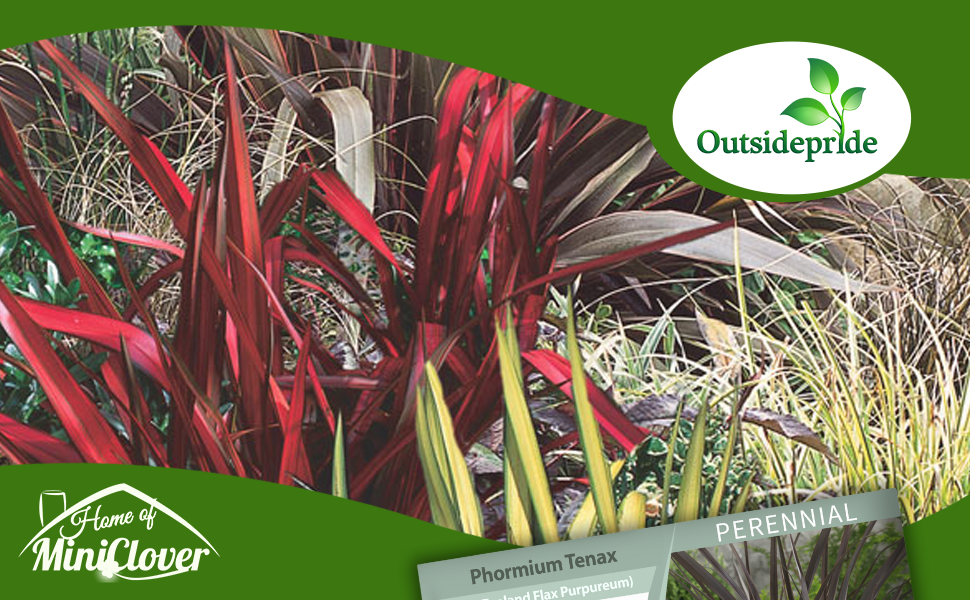

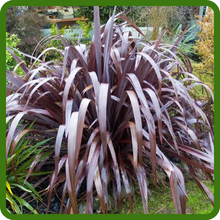
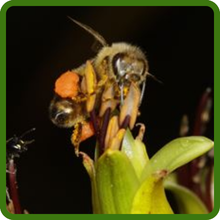
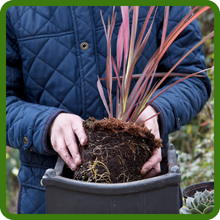
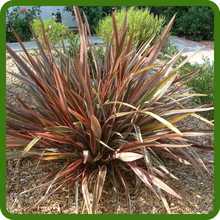
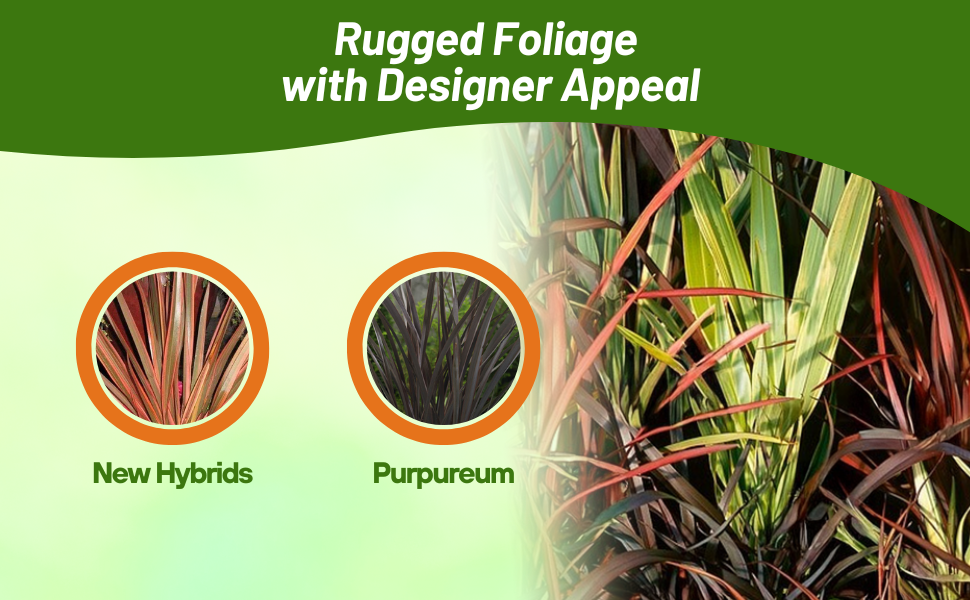
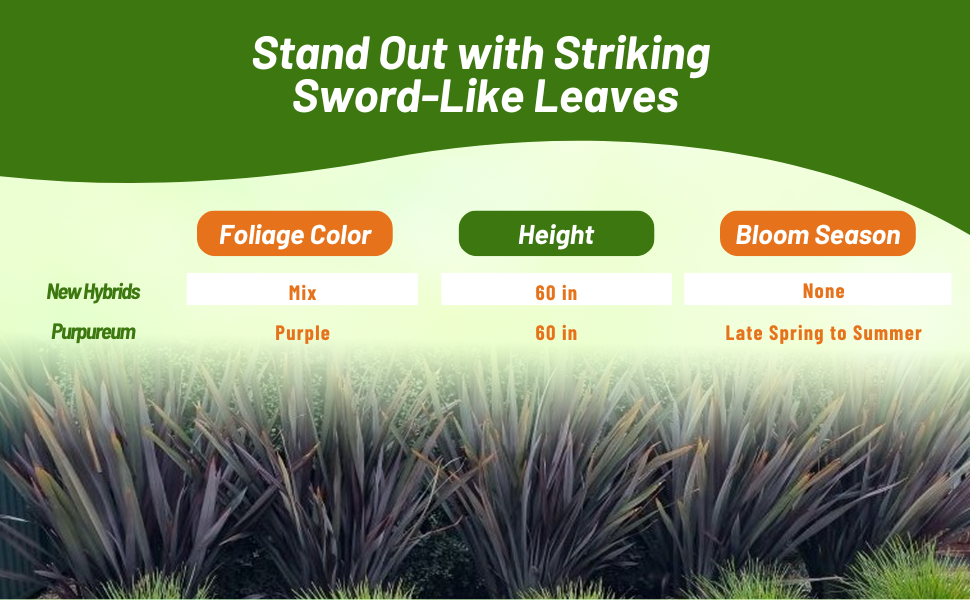

Phormium Tenax (New Zealand Flax New Hybrids) - Phormium, a native New Zealander, is pretty new on the scene here in the U.S. It has long been grown for its strong, upright and fast growth habit and is sometimes called an ornamental grass on steroids which makes a great accent plant. Many gardeners know New Zealand Flax as a large and often colorful spiky plant that makes an arresting focal point in the garden or in containers.
Phormium Tenax has sword-like leaves that shoot up from the base of the plant and new hybrids are now available in shades of yellow, pink, red and bronze. Hummingbirds love to feed on these nectar-rich blossoms. Phormiums are salt tolerant making them ideal for planting in coastal areas.
Common Questions
Will deer eat my phormium plants?
No, deer and rabbits tend to avoid these plants.
Do I need to prune my phormium plants?
Yes, the best time to prune in is the fall. Start by cutting dead, dying or diseased leaves off at the base. Trim again in spring if winter has been hard on your plants before new growth appears.
What are some good companion plants for phormium?
Flowers such as African daisy, geranium, coreopsis and red hot poker are a striking combination with phormium as are other ornamental grasses.
Can I grow in containers?
Yes, phormium can easily be grown in containers. Choose a rich organic potting soil and keep plants well-watered during summer heat without allowing it to sit in wet soil for any length of time. Protect plants from frost.
Planting Directions
TEMPERATURE
65 - 70F
TEMPERATURE
AVERAGE GERM TIME
AVERAGE GERM TIME
Germination is uneven over 1 - 6 months
LIGHT REQUIRED
Yes
DEPTH
1/8th inch
SOWING RATE
2 seeds per plant
MOISTURE
Keep seeds moist until germination
PLANT SPACING
48 inches
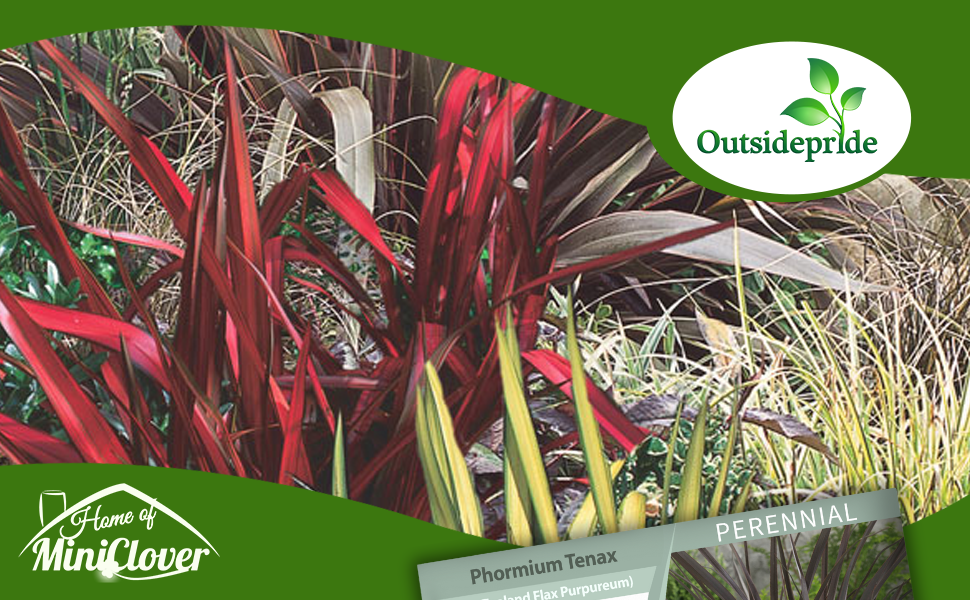
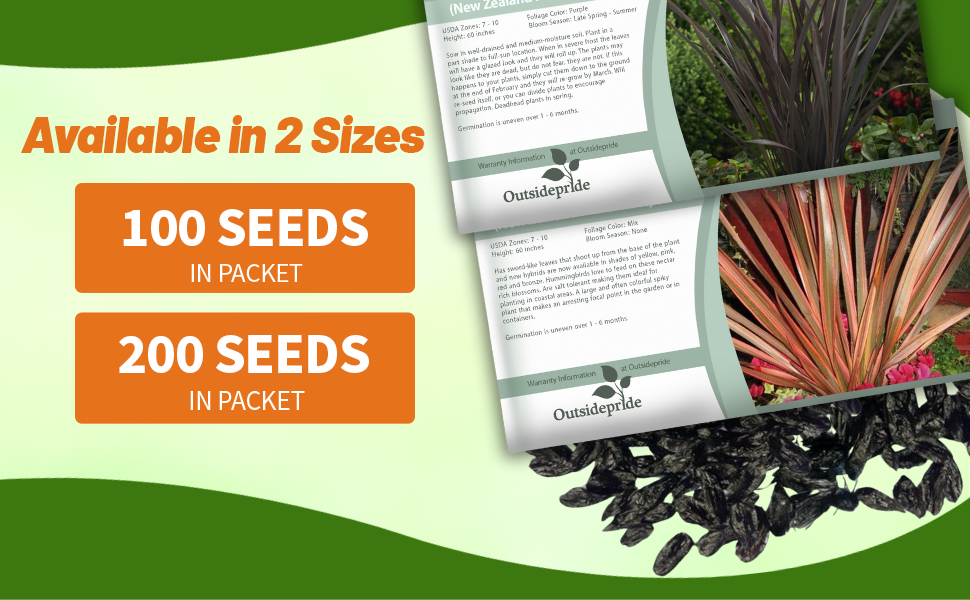
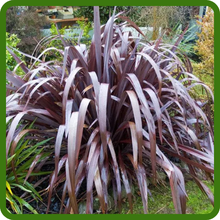


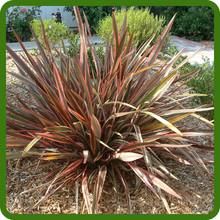
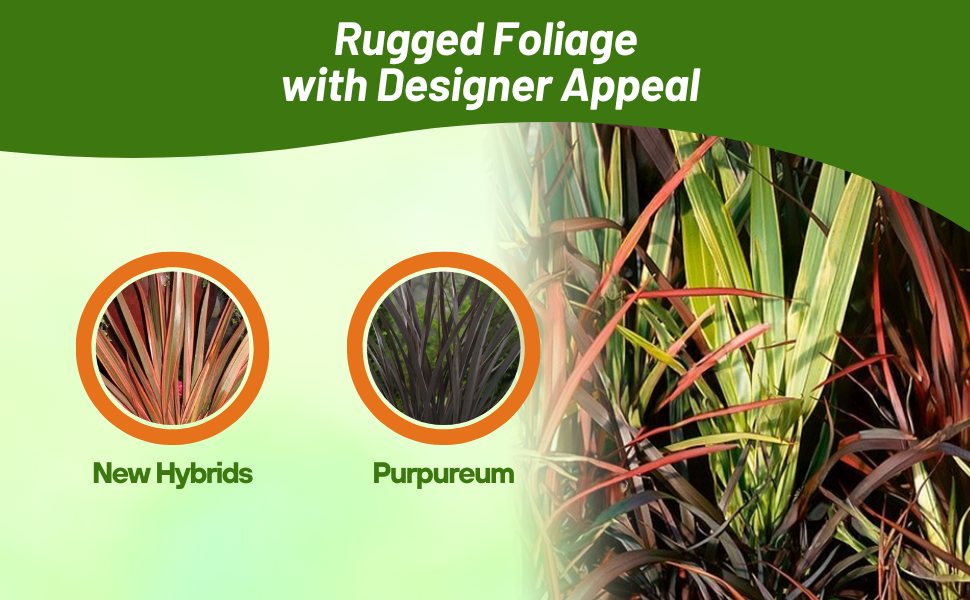
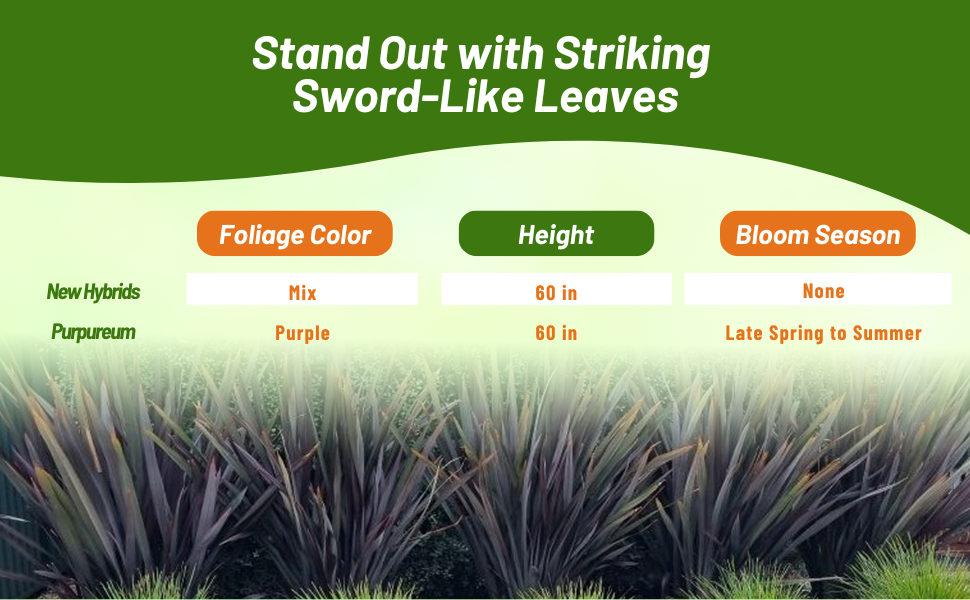
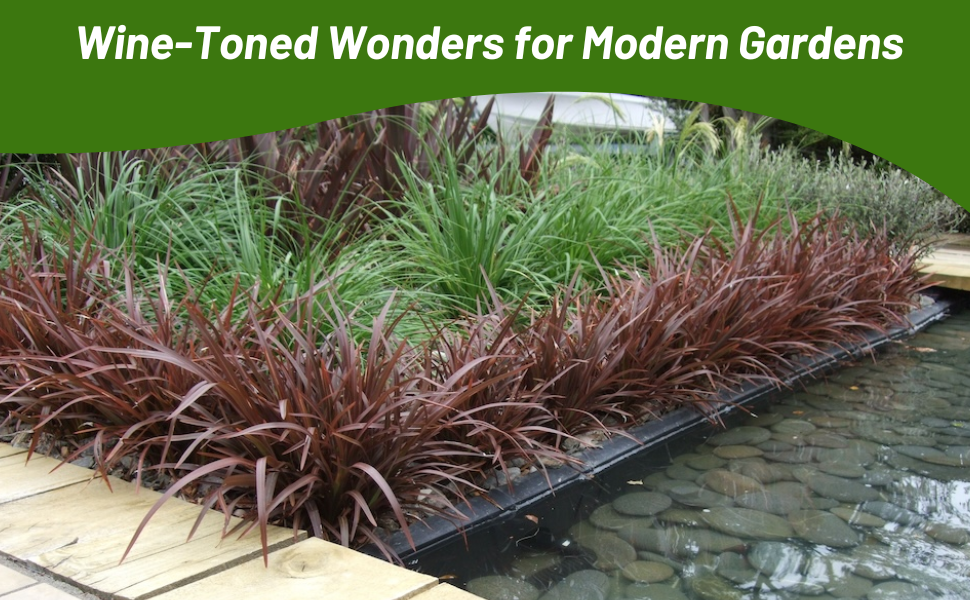
Phormium Tenax (New Zealand Flax Purpureum) - Upright wide, purple bronze foliage, provides a stunning focal point for any landscaping project for the garden or pots. Hummingbirds love to feed on orange nectar-rich blossoms. Phormiums are salt tolerant making them ideal for planting in coastal areas.
Native to New Zealand, Phormium tenax grows large tufts of broad, sword-shaped, stiffly ascending leaves. It does best in moderate climates and is a perfect companion for palms, bamboos and tree ferns. It is extremely tolerant of wind and can take coastal exposure as well as light freezes. The Purple New Zealand Flax may take a while to grow from seeds, but it will be worth your efforts.
Common Questions
Will deer eat my phormium plants?
No, deer and rabbits tend to avoid these plants.
Do I need to prune my phormium plants?
Yes, the best time to prune in is the fall. Start by cutting dead, dying or diseased leaves off at the base. Trim again in spring if winter has been hard on your plants before new growth appears.
What are some good companion plants for phormium?
Flowers such as African daisy, geranium, coreopsis and red hot poker are a striking combination with phormium as are other ornamental grasses.
Can I grow in containers?
Yes, phormium can easily be grown in containers. Choose a rich organic potting soil and keep plants well-watered during summer heat without allowing it to sit in wet soil for any length of time. Protect plants from frost.
















